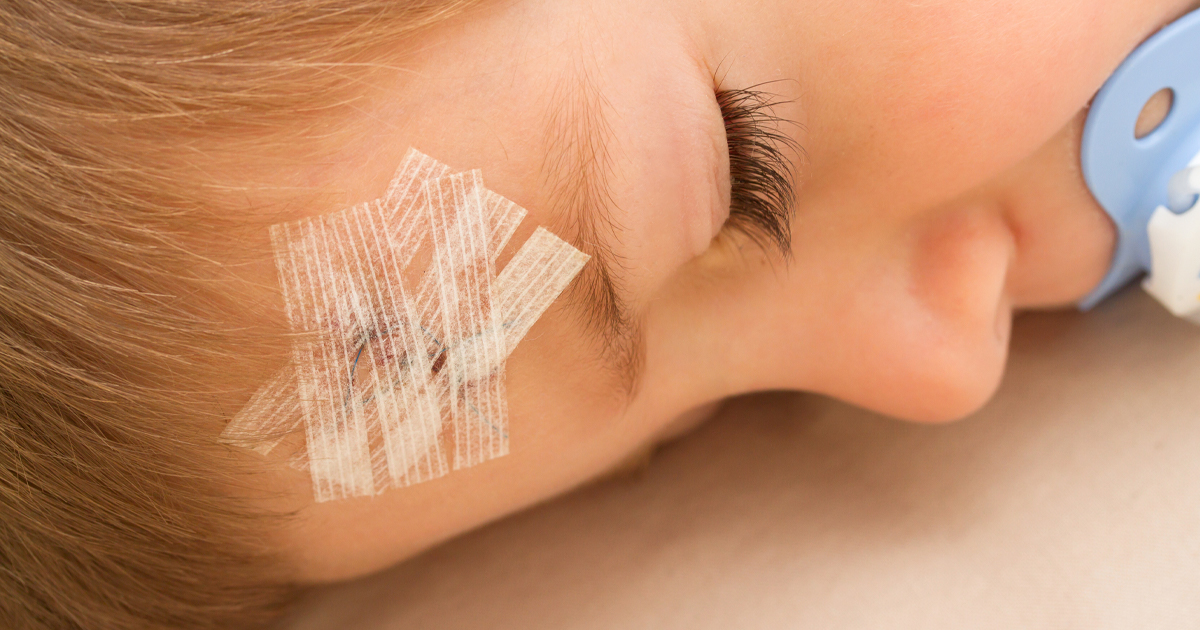When your child requires stitches, it becomes crucial to understand how to take care of them effectively. Not only can proper care expedite healing, but it can also prevent complications such as infection. In this blog post, we’ll walk you through the essentials of caring for stitches after placement, and provide guidelines on handling potential infection signs.
What Are Stitches?
Stitches play an integral role in wound healing, much like the thread in your clothing holding the fabric together. Made from various materials, including nylon and silk, they either dissolve naturally or need removal after approximately five to seven days.
8 Tips to Properly Care for Stitches
In most cases, you’ll receive aftercare instructions when your child has stitches, but we recommend referring to the general guidelines we have outlined below.
1. Keep the stitches clean and dry for 24 hours.
This means you will need to keep the area around the stitches covered and dry. You can use a bandage or wrap to do this. If the stitches get wet, change the dressing as soon as possible.
2. Take pain medication if needed.
Your child may experience some pain and discomfort after getting their stitches. You can give them over-the-counter pain medications, such as ibuprofen, to help relieve the pain. Use our pain medication dose chart to make sure you are giving your child a safe amount.
3. Wash around the wound twice daily until sutures are removed.
To properly care for your child’s stitches, wash around the wound twice a day using clean water. Avoid using peroxide or alcohol as that may delay the healing process.
4. Cover with petroleum jelly to keep the area moist.
The American Academy of Dermatology recommends petroleum jelly for helping stitches to heal. Petroleum jelly keeps the wound moist and prevents it from drying out and forming a scab; scabbed wounds take longer to heal. This will also keep a scar from becoming too big, deep, or itchy.
5. Keep your child out of dirty places.
Keep your child indoors as much as possible and avoid any outdoor activities and sports while the stitches heal to help prevent infection.
6. Apply pressure if it is bleeding.
Apply firm pressure to the area around the stitch for about five minutes until the bleeding has stopped. Do not remove any clots that have formed. You can also put ice on the area to help reduce swelling and bruising.
7. Elevate the area if needed.
If your child’s stitches are on their arm or leg, you can elevate the area to help reduce swelling.
8. Avoid direct exposure to sunlight to limit scarring.
Your child’s stitches are very sensitive to strong sunlight and can burn easily, so please try to avoid exposing stitches to the sun.
What Are The Signs of Infected Stitches?
It is usual for stitches or staples to cause mild redness around the wound area, and a little pain in the area is also no cause for alarm. However, monitoring your child’s stitches is crucial to ensure irritation, pain, and inflammation are minor and not infection indicators. If you aren’t sure, you can use The Youth Clinic’s symptom checker as a starting point.
Signs of infection:
- Your child has a fever or swollen glands (or both).
- Your child has increased pain even with pain medicine, or the pain radiates out beyond the wound area.
- The area around the wound is getting more swollen.
- There’s expanding area of redness around the wound or red streaks on the skin around the wound.
- You see blood or pus draining from the wound.
- Your child has signs of dehydration, such as peeing less, dark pee, a dry mouth, or sunken eyes.
If your child is experiencing any of the symptoms above, call your doctor right away. In most cases, your doctor will prescribe an antibiotic to clear up the infection.
Stitches are a common way to close up wounds, and they can help your child heal faster! Pediatric Urgent Care of Northern Colorado is equipped to handle nearly all wounds that involve bleeding. We recommend visiting urgent care instead of the emergency room to save wait times and avoid ER-related copays for stitches.
You can even save time and pre-register!

